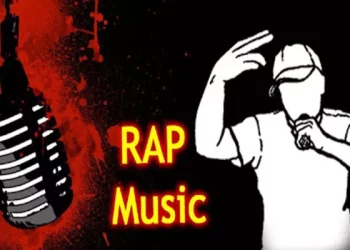Poland’s musical heritage is a rich tapestry woven from centuries of cultural influences, historical events, and regional traditions. The evolution of music in Poland reflects its complex history, marked by both turmoil and creativity. This article delves into the various types of music that originated in Poland, highlighting their significance and the enduring impact they have had on both Polish culture and the global music scene.
The Historical Context of Polish Music
Poland’s musical history can be traced back to the medieval era, with the earliest notated music appearing in the 13th century. This period saw the emergence of liturgical chants influenced by the Latin Church, which laid the groundwork for future musical developments. One of the earliest known Polish hymns, Bogurodzica, dates back to this time and is considered a national treasure. It was sung by Polish soldiers during significant battles, symbolizing national identity and unity.
As Poland transitioned through various historical phases—including the Renaissance, Baroque, and Romantic periods—its music evolved significantly. Each era contributed unique styles and forms, reflecting both local traditions and broader European trends. The influence of folk music remained a constant thread throughout these changes, shaping the soundscape of Polish music.
see also: How Many Black Musicians Are in The Country Music Hall of Fame?
Types of Music Originating in Poland
1. Folk Music
Polish folk music is characterized by its vibrant melodies, intricate rhythms, and deep-rooted traditions. It serves as a reflection of rural life and cultural identity. Key forms of Polish folk music include:
Mazurka: A lively dance in triple meter, originating from Mazovia. It often features strong accents on the second or third beat.
Polonaise: A slow dance that became a symbol of Polish nationalism, often associated with royal ceremonies.
Krakowiak: A fast-paced dance from Kraków, known for its energetic rhythm and lively tempo.
Kujawiak: A more lyrical dance from Kujawy, typically performed in a moderate tempo.
Oberek: A lively dance characterized by rapid movements and quick tempo.
Polska: A traditional partner dance that varies regionally across Poland.
These dances are often accompanied by traditional instruments such as violins, accordions, and various types of drums.
2. Classical Music
Poland has made significant contributions to classical music, particularly through composers who drew inspiration from folk themes:
Frédéric Chopin: Perhaps the most famous Polish composer, Chopin’s works such as nocturnes and mazurkas incorporate traditional Polish elements into classical forms.
Stanisław Moniuszko: Known as the father of Polish opera, his works like Halka and The Haunted Manor are foundational to Polish musical theater.
Karol Szymanowski: A 20th-century composer who blended folk motifs with modernist techniques to create a distinctly Polish sound.
The integration of folk elements into classical compositions has helped maintain a connection between Poland’s musical past and its contemporary expressions.
3. Religious Music
Religious music has played an essential role in Poland’s cultural landscape:
Liturgical Chants: These early forms of sacred music were influenced by Western European traditions but adapted to fit local languages and contexts.
Choral Music: Throughout history, choral compositions have been significant in both church services and secular performances. Composers like Mikołaj Gomółka blended folk melodies with polyphonic structures to create rich choral works.
The enduring nature of religious music in Poland reflects the country’s deep spiritual roots and its historical ties to Catholicism.
4. Contemporary Genres
In recent decades, Poland has seen a surge in diverse musical genres that reflect modern influences while still paying homage to traditional roots:
Disco Polo: A genre that emerged in the 1980s characterized by catchy melodies and simple lyrics, often associated with celebrations such as weddings.
Rock and Jazz: These genres have gained popularity since the fall of communism in 1989. Notable artists include rock bands like Wilki and jazz musicians like Tomasz Stańko.
Folk Electronica: This contemporary genre blends traditional folk sounds with electronic music elements, showcasing how Polish musicians are innovating while respecting their heritage.
These modern genres illustrate how Polish music continues to evolve while retaining its cultural significance.
The Role of Music Festivals
Music festivals play a crucial role in promoting both traditional and contemporary Polish music. Events such as:
The Warsaw Village Band Festival: Celebrates traditional folk music while encouraging new interpretations.
The Kraków Jazz Autumn: Highlights Poland’s vibrant jazz scene and fosters connections between local musicians and international artists.
These festivals not only preserve Poland’s rich musical traditions but also provide platforms for emerging artists to showcase their talents.
Conclusion
The musical landscape of Poland is a testament to its rich history and cultural diversity. From traditional folk dances like the mazurka and polonaise to classical masterpieces by composers like Chopin and Moniuszko, each type of music reflects the spirit of its time while contributing to a collective national identity. As contemporary genres continue to emerge, they demonstrate Poland’s ability to adapt and innovate while honoring its musical heritage.
Related topics:



























